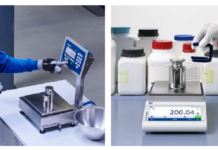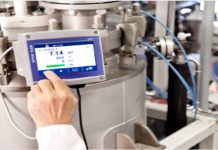As per Deloitte India report, “Green wings: India’s Sustainable Aviation Fuel (SAF) revolution in the making,” India could produce 8-10 million tons of SAF annually by FY40.
Investments worth ₹6-7 lakh crore ($70-85 billion) would be required to realise the projected SAF production. It will give impetus to the aviation sector’s decarbonisation efforts, reducing carbon emissions to 20-25 million tons annually.
The report indicates that an 8-10 million tons production would surpass India’s estimated domestic demand of 4.5 million tons for a 15 percent blending mandate in 2040 across all flights. It could also position India as a leading SAF exporter serving global markets.
The projected capital investment of ₹6-7 lakh crore will result in a substantial socio-economic impact, creating between 1.1 and 1.4 million jobs across the value chain and reducing crude oil import bills by $5-7 billion annually.
Further, SAF production can boost farmers’ income by 10-15 percent by using agricultural residue as feedstock, providing a sustainable alternative to the current practice of burning crop waste.
Viral Thakker, Partner and Sustainability and Climate Leader, Deloitte South Asia said, “India’s SAF journey is more than meeting domestic demand or becoming a global exporter—it is about creating a robust ecosystem where technology, policy and local communities are interwoven. By empowering farmers and reducing carbon emissions, SAF offers a blueprint for sustainable economic growth. The confluence of abundant feedstock, technological innovation and policy alignment presents an immediate opportunity to meet our blending mandates and serve global demand. The challenge now is to move swiftly, turning strategic vision into practical solutions that deliver long-term environmental and economic value”.
As per Deloitte’s analysis, India’s estimated surplus of 230 million tons of agricultural residue will be a crucial resource for producing SAF. The surplus will serve as a vital feedstock for ethanol (2G) production, a key component in the Alcohol-to-Jet (AtJ) technology pathway for SAF manufacturing.
At the same time, AtJ route with ethanol (1G) produced from sugar and grain can provide an initial boost until the technology fully matures. Municipal Solid Waste (MSW) and used cooking oil (UCO) will contribute to the overall potential. Alternate feedstock such as sweet sorghum, seaweed and industrial waste can give further impetus to SAF potential with technological maturity.
Prashanth Nutula, Partner, Deloitte India added, “The drive to produce SAF is quickly becoming a reality globally and in India. With a 2–3 percent share in the global ATF market, India is favourably positioned in the global aviation fuel market, including SAF. Moreover, India also emerges as a competitive geography due to its proximity to airline hubs in the Middle East and Europe and favourable cost structures. As a result, India is poised to play a pivotal role as global demand for SAF surges. As we harness the power of diverse feedstocks, such as agricultural residue and municipal waste, we also set the foundation for waste-to-fuel innovation that could be replicated across other sectors. By fostering collaboration across sectors, India can shape the future of sustainable aviation globally, driving both environmental and economic impact now and for decades to come”.
Successful adoption of SAF will require collective interventions from all the ecosystem stakeholders. Establishing a clear and long-term demand roadmap, such as Renewable Purchase Obligations (RPO), will foster interest and stimulate early investments, even when technologies are not commercially viable.
SAF facilities will require a stable and reliable supply of feedstock. Key stakeholders, such as Farmer Producer Organisations (FPO), need to take an active role in accelerating the establishment of supply chains. This includes collecting, warehousing, segregating and handling logistics, in collaboration with producers.
Additionally, the formation of multi-stakeholder Special Purpose Vehicles (SPVs) that bring together airlines, SAF manufacturers, Oil Marketing Companies (OMCs), FPOs and technology providers can help mitigate initial risks and overcome the initial inertia before the SAF flywheel starts moving.
As per the press release, financial incentives, such as Production Linked Incentives (PLI), viability gap funding, tax breaks and interest subventions, are needed to drive investments to kick-start SAF adoption.
































